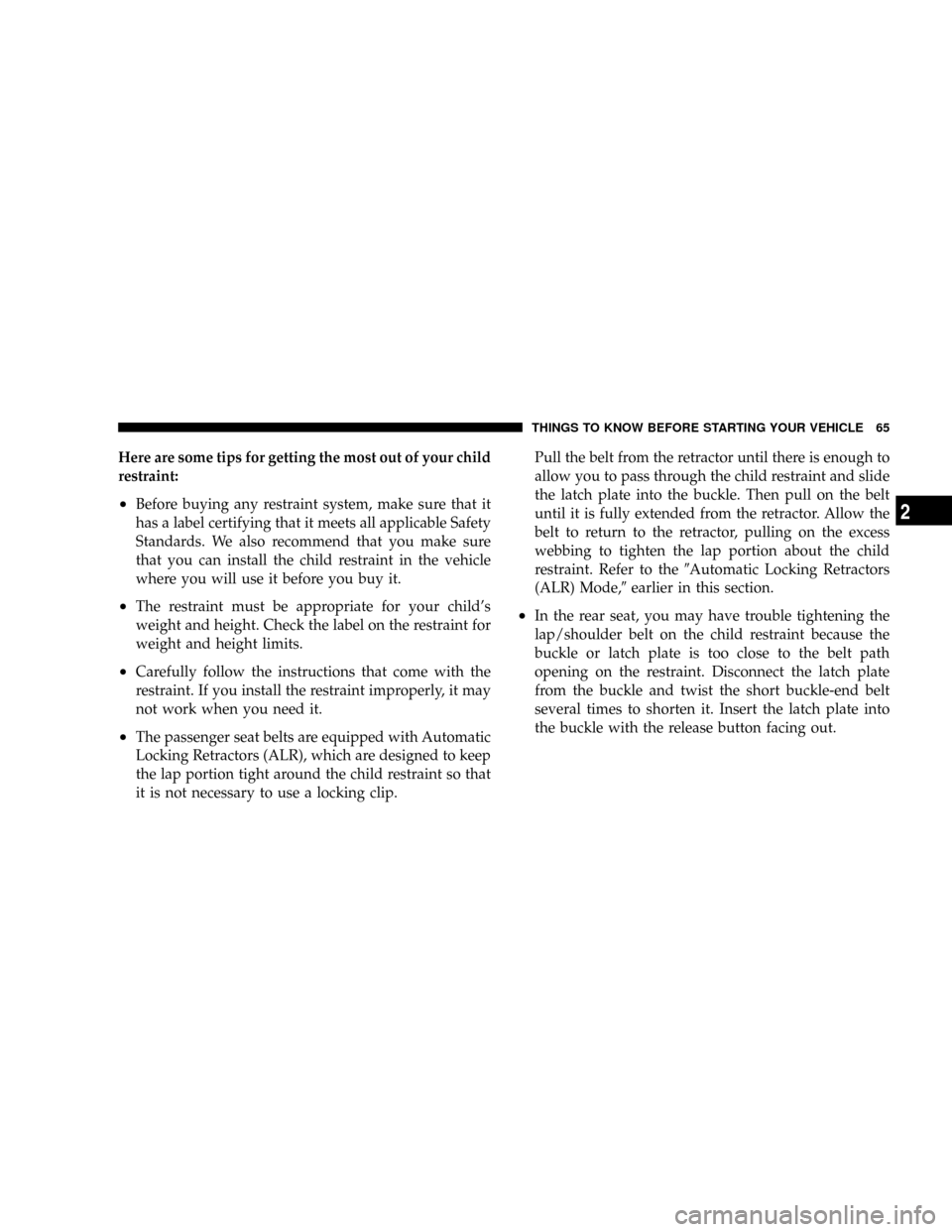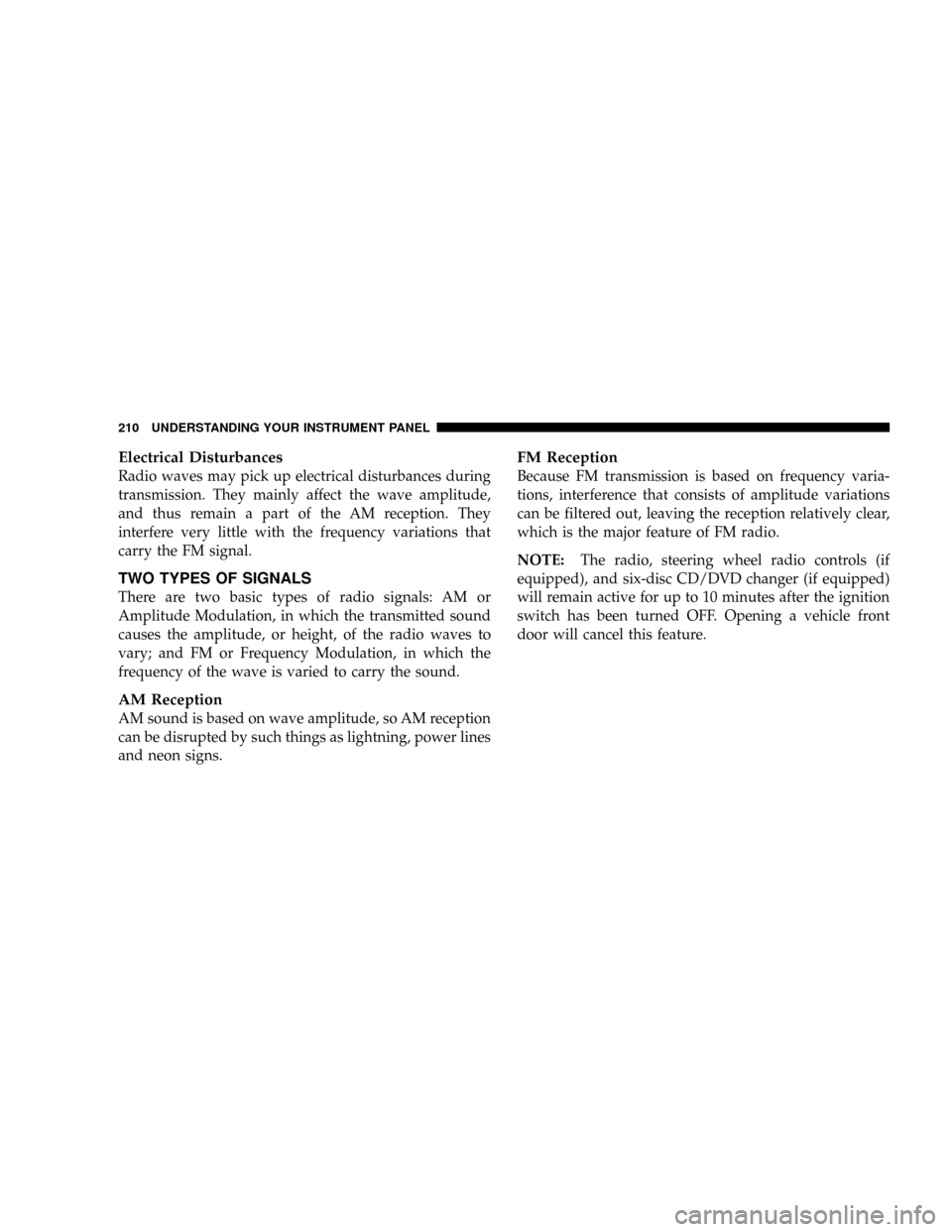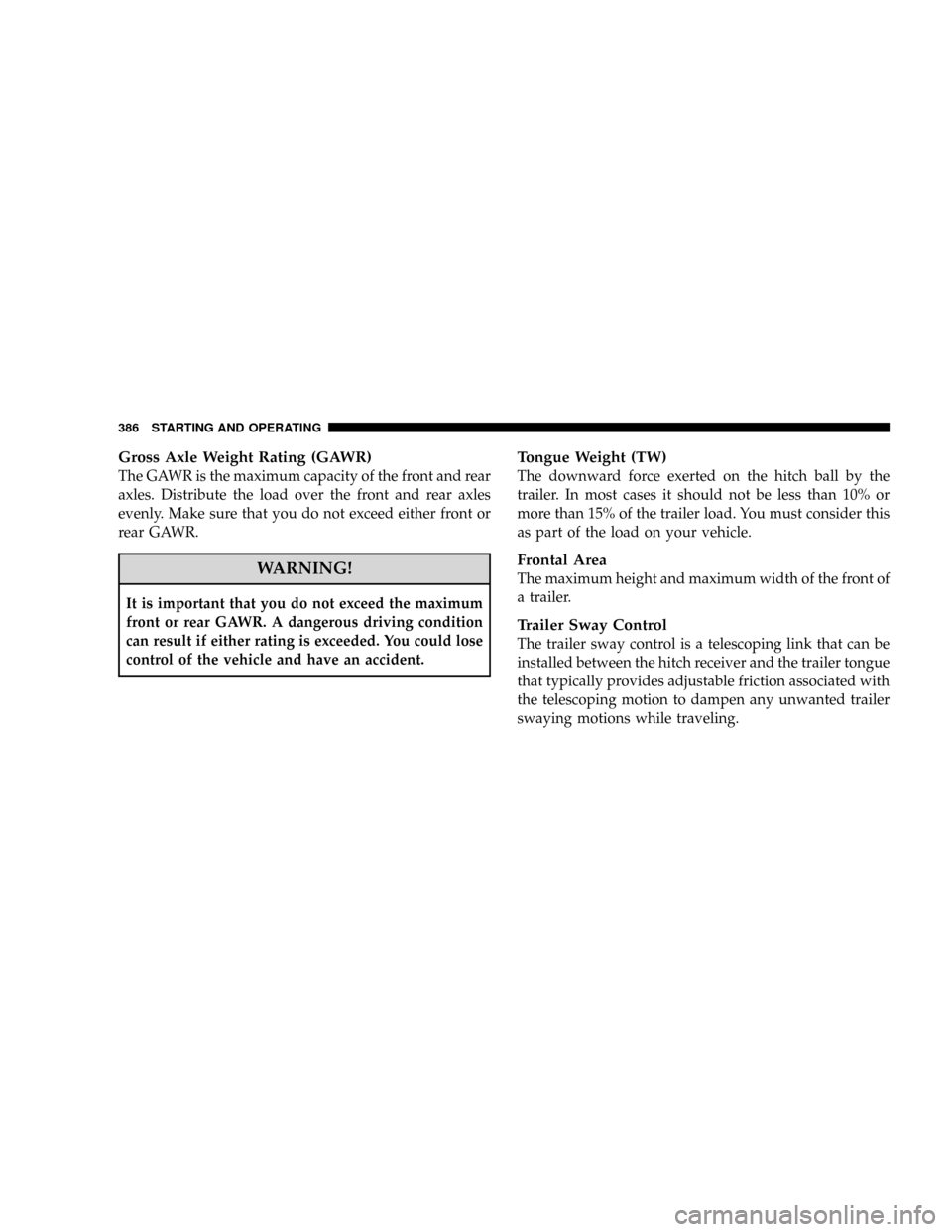Page 67 of 554

Here are some tips for getting the most out of your child
restraint:
²Before buying any restraint system, make sure that it
has a label certifying that it meets all applicable Safety
Standards. We also recommend that you make sure
that you can install the child restraint in the vehicle
where you will use it before you buy it.
²The restraint must be appropriate for your child's
weight and height. Check the label on the restraint for
weight and height limits.
²Carefully follow the instructions that come with the
restraint. If you install the restraint improperly, it may
not work when you need it.
²The passenger seat belts are equipped with Automatic
Locking Retractors (ALR), which are designed to keep
the lap portion tight around the child restraint so that
it is not necessary to use a locking clip.Pull the belt from the retractor until there is enough to
allow you to pass through the child restraint and slide
the latch plate into the buckle. Then pull on the belt
until it is fully extended from the retractor. Allow the
belt to return to the retractor, pulling on the excess
webbing to tighten the lap portion about the child
restraint. Refer to the9Automatic Locking Retractors
(ALR) Mode,9earlier in this section.
²In the rear seat, you may have trouble tightening the
lap/shoulder belt on the child restraint because the
buckle or latch plate is too close to the belt path
opening on the restraint. Disconnect the latch plate
from the buckle and twist the short buckle-end belt
several times to shorten it. Insert the latch plate into
the buckle with the release button facing out.
THINGS TO KNOW BEFORE STARTING YOUR VEHICLE 65
2
Page 125 of 554
The power seat controls are on the outboard side of the
front seat cushions. One switch controls the seat move-
ment. The six-way switch can be moved forward or
backward to get the most comfortable position. The sameswitch can be moved up and down to control seat height,
or to change the seat angle by tilting it up or down.
Power Seat Switch
Power Seat Switch Position
UNDERSTANDING THE FEATURES OF YOUR VEHICLE 123
3
Page 127 of 554
The power seat controls are on the outboard side of the
front seat cushions. Three switches control the seat move-
ment. The four-way switch in the center can be moved
forward or backward to get the most comfortable posi-
tion. The same switch can be moved up and down tocontrol seat height. Change the seat angle by using the
two toggle switches, tilting it up or down.
Up, Down, Forward, and Rearward
Tilt Adjustment
UNDERSTANDING THE FEATURES OF YOUR VEHICLE 125
3
Page 212 of 554

Electrical Disturbances
Radio waves may pick up electrical disturbances during
transmission. They mainly affect the wave amplitude,
and thus remain a part of the AM reception. They
interfere very little with the frequency variations that
carry the FM signal.
TWO TYPES OF SIGNALS
There are two basic types of radio signals: AM or
Amplitude Modulation, in which the transmitted sound
causes the amplitude, or height, of the radio waves to
vary; and FM or Frequency Modulation, in which the
frequency of the wave is varied to carry the sound.
AM Reception
AM sound is based on wave amplitude, so AM reception
can be disrupted by such things as lightning, power lines
and neon signs.
FM Reception
Because FM transmission is based on frequency varia-
tions, interference that consists of amplitude variations
can be filtered out, leaving the reception relatively clear,
which is the major feature of FM radio.
NOTE:The radio, steering wheel radio controls (if
equipped), and six-disc CD/DVD changer (if equipped)
will remain active for up to 10 minutes after the ignition
switch has been turned OFF. Opening a vehicle front
door will cancel this feature.
210 UNDERSTANDING YOUR INSTRUMENT PANEL
Page 342 of 554
Tire Sizing Chart
TIRE SIZING TERMS
Size Designation:
P= Passenger Car tire size based on U.S. design standards
(....blank....(= Passenger Car tire based on European design standards
LT= Light Truck tire based on U.S. design standards
T= Temporary spare tire
31= Overall diameter in inches (in)
215= Section width in millimeters (mm)
65= Aspect ratio in percent (%)
Ð Ratio of section height to section width of tire
10.5= Section width in inches (in)
R= Construction code
Ð9R9means radial construction
Ð9D9means diagonal or bias construction
15= Rim diameter in inches (in)
340 STARTING AND OPERATING
Page 388 of 554

Gross Axle Weight Rating (GAWR)
The GAWR is the maximum capacity of the front and rear
axles. Distribute the load over the front and rear axles
evenly. Make sure that you do not exceed either front or
rear GAWR.
WARNING!
It is important that you do not exceed the maximum
front or rear GAWR. A dangerous driving condition
can result if either rating is exceeded. You could lose
control of the vehicle and have an accident.
Tongue Weight (TW)
The downward force exerted on the hitch ball by the
trailer. In most cases it should not be less than 10% or
more than 15% of the trailer load. You must consider this
as part of the load on your vehicle.
Frontal Area
The maximum height and maximum width of the front of
a trailer.
Trailer Sway Control
The trailer sway control is a telescoping link that can be
installed between the hitch receiver and the trailer tongue
that typically provides adjustable friction associated with
the telescoping motion to dampen any unwanted trailer
swaying motions while traveling.
386 STARTING AND OPERATING